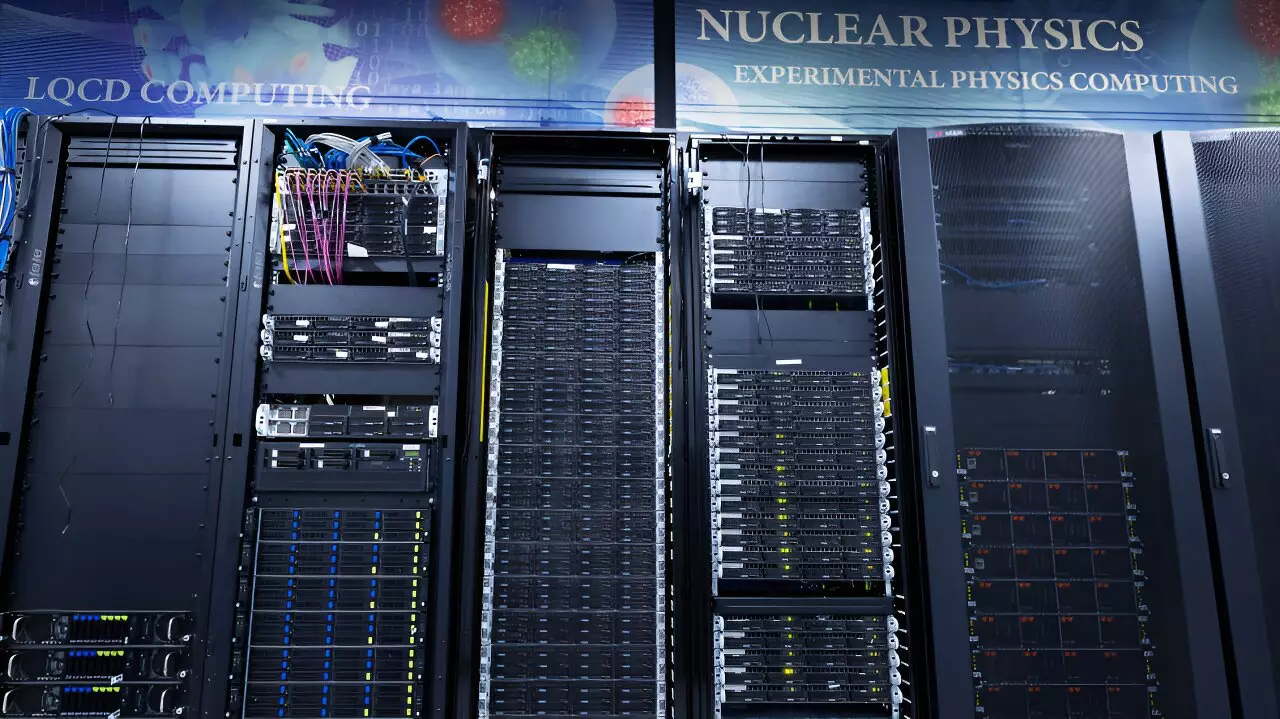The realm of particle physics continually challenges our understanding of the universe and its fundamental building blocks. One of the most profound mysteries within this field is the structure of protons and neutrons, the very nuclei of atoms. At a glance, protons seem solid, yet a closer inspection reveals a dynamic and tumultuous world within, characterized by an intricate dance of quarks and gluons. Recent breakthroughs by the HadStruc Collaboration, a group of nuclear physicists at the Thomas Jefferson National Accelerator Facility (Jefferson Lab) and partner institutions, aim to elucidate this unseen complexity, thus advancing our comprehension of the strong interaction that binds these particles together.
Central to the HadStruc Collaboration’s work is the concept of partons, which include quarks and gluons. These fundamental constituents of hadrons—such as protons and neutrons—engage in a constant interplay within the particle’s interior, governed by the strong force, one of nature’s four fundamental interactions. Traditional understanding posits that protons are formed from two up quarks and one down quark, with gluons acting as the mediators of the strong force that holds them together. However, this glimpse is limited; the reality is significantly more intricate.
The collaboration’s researchers have begun mapping the distribution and behavior of quarks and gluons using advanced mathematical frameworks. Their recent publication delineates a novel approach utilizing Generalized Parton Distributions (GPDs), which offer a more comprehensive view of the internal structure of the proton in three dimensions, contrasting sharply with the older, one-dimensional Parton Distribution Functions (PDFs). This transition from a simplistic to a multifaceted understanding reflects the evolution in theoretical physics and highlights the immense potential GPDs hold for resolving longstanding questions in the field.
The Role of Lattice Quantum Chromodynamics (QCD)
Among the innovative methodologies employed by the HadStruc Collaboration is lattice quantum chromodynamics (QCD). This computational technique allows scientists to simulate and analyze the behavior of quarks and gluons within protons through a grid-like model in a quantum framework. The collaboration utilized powerful supercomputers to perform extensive simulations, executing over 65,000 tests to examine their theoretical assumptions regarding the structure of hadrons.
Through this rigorous computational effort, they observed that the distribution of energy and momentum within protons is crucial for understanding their spin—a central question since the realization in the late 1980s that quark spins account for less than half of the proton’s total spin. This revelation has spurred inquiries into the roles played by gluon spin and the orbital angular momentum of partons, both of which contribute significantly to the total spin of the proton.
The results attained from the HadStruc Collaboration’s simulations signify a remarkable step forward in probing the intricacies of proton structure. Specifically, they are now focused on understanding the energy-momentum distribution within the proton, a pursuit that interlinks theoretical physics with experimental methodologies. The collaboration’s preliminary findings not only validate their novel 3D approach but also set the stage for forthcoming experimental investigations.
The exploration of the proton via GPDs is poised to take off significantly at new and emerging facilities like the Electron-Ion Collider (EIC) at Brookhaven National Laboratory. This facility is expected to push the frontier of hadron research, enabling deeper investigations than are possible with current technologies. As physicists conduct experiments on other high-energy platforms, such as Jefferson Lab, they are simultaneously gathering data to refine their theoretical predictions, thus forging a vital connection between theory and practice.
The Significance of Theoretical Physics in Progress
A crucial insight from the HadStruc Collaboration is the historical trend in which theoretical innovation often lags behind experimental findings in quantum chromodynamics. As Joseph Karpie noted, there is a significant drive within the collaboration to produce predictions and advance the theoretical framework proactively rather than responding to experimental results after the fact. This proactive approach could pave the way for more accurate predictions in particle physics, aiding in the understanding of complex phenomena that have remained elusive.
The work of the HadStruc Collaboration stands at the forefront of nuclear physics research, promising to deepen our understanding of the very fabric of matter. Through advanced mathematical frameworks and extensive computational simulations, they are unraveling the complexities surrounding proton structure, bridging crucial connections between theoretical models and experimental data. As their research progresses, it heralds a new era in our quest to comprehend the fundamental interactions that underpin the universe.


Leave a Reply